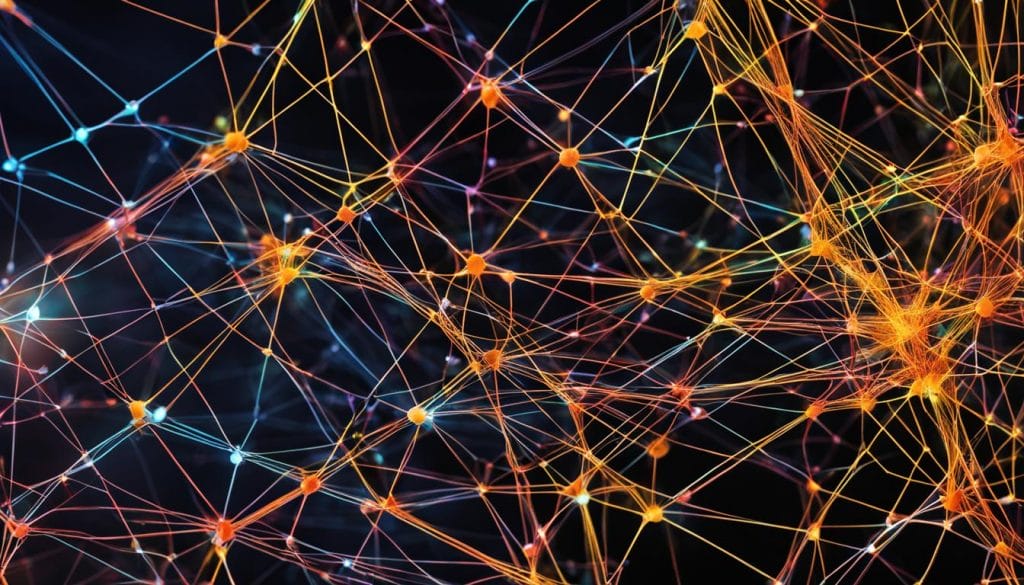When examining the world of artificial intelligence, we often come across the question, “What are AI tools?” These tools encompass a diverse range of technologies that simulate human intelligence and perform complex tasks based on the input they receive. In this introduction to AI tools and their functionality, we will explore key concepts such as machine learning, deep learning, generative AI, and neural networks, delving into how they work and the types of AI systems they support.
AI tools have a broad range of applications across numerous industries and continue to evolve as technology advances. To better understand AI’s potential and the ways in which we can use AI effectively, let’s first explore the underlying mechanisms that make up an AI system and how these different algorithms contribute to the remarkable capabilities of AI.For a deeper dive into the most effective solutions, consider exploring the top AI tools for modern businesses
Demystifying Artificial Intelligence
Artificial intelligence has been a popular topic of discussion in recent years, as the field has significantly advanced and penetrated various sectors of human society. In this section, we will define the core principles of AI and explore the evolution of AI technologies, from the groundbreaking achievements of IBM’s Deep Blue to the contemporary AI systems that shape our daily lives. See how these advancements in AI might influence the future of programming careers
Defining AI and Its Core Principles
At the foundation of artificial intelligence are agents that receive and interpret data from their environment, and consequently perform actions. AI embodies an extension of human intelligence, processing large datasets using fast, algorithm-driven processes, enabling automated learning and decision-making. The core principles of AI revolve around simulating human thought processes and rationality, aiming to create systems that can think and act both rationally and humanly. Central to AI research is natural language processing, which allows machines to comprehend and generate human languages, facilitating more natural interactions between humans and AI systems.
The Evolution from IBM’s Deep Blue to Modern AI
The history of AI features several milestones that demonstrate the genuine progress and potential of this field. One significant event in AI evolution was the creation of IBM’s Deep Blue in the 1990s. This chess-playing computer became the first AI system to defeat a reigning world chess champion in a game under standard time constraints, simultaneously marking a historic moment and whetting human curiosity and ambition with regards to AI development.
A key milestone in AI history was the innovative Deep Blue AI system, which defeated the world chess champion of the time, Garry Kasparov, in 1997.
Contrasting with the AI systems of those earlier days, modern AI comprises complex and multifaceted technologies that can learn from past experiences, adapt to new situations, and perform various tasks that were once considered the exclusive domain of human intellect. This evolution raises questions about the capabilities of AI in various domains, including its ability to generate content indistinguishable from human writing. For an in-depth exploration of this topic, particularly the effectiveness of AI content detection tools, read our article on Do ChatGPT Detectors Work? Investigating AI Content Detection.”
- Early AI: Mainly rule-based systems and expert systems with limited knowledge and abilities.
- IBM’s Deep Blue: A specialized AI system that defeated the world chess champion but lacked broad applicability.
- Modern AI: Complex systems that can learn from data and experience, handling multiple tasks, and continually improving over time.
As AI continues to evolve, we can anticipate further advancements that will challenge our understanding of what machines can achieve, ultimately inspiring us to keep exploring and perfecting AI technologies and applications.
The Mechanisms Behind AI Tools
Cutting-edge ai technologies and ai algorithms lie at the heart of AI tools’ mechanisms, blending vast amounts of data with intricate calculations to facilitate autonomous machine learning. By adhering to a step-by-step process that includes gathering perceptual input, interpreting existing and previous information, and executing a multitude of actions, AI mechanisms effectively streamline complex tasks.
These actions can span from straightforward responses to more complicated analyses and decision-making, largely depending on the intricacy and context of the AI technology being utilized. To better understand the mechanisms behind AI tools, let’s explore some foundational concepts related to machine learning and artificial intelligence.
- Machine Learning: This powerful approach forms the backbone of most AI systems, enabling machines to automatically learn from data and adapt their algorithms over time. It leverages data-driven techniques, such as regression analysis and decision tree learning, to facilitate increased efficiency and accuracy in various applications.
- Artificial Neural Networks: Inspired by the architecture of the human brain, these interconnected networks represent a key AI concept. They enable machines to process vast quantities of data in parallel, emulating the function of biological neurons to support rapid decision-making and learning.
- Deep Learning: Often viewed as a subfield of machine learning, deep learning focuses on the implementation and training of artificial neural networks. By using multiple interconnected layers of neurons, these advanced AI mechanisms can autonomously learn intricate patterns and solve complex problems.
As AI tools continue to evolve, new techniques and methodologies are constantly being developed. In recent years, for example, the emergence of Generative Adversarial Networks (GANs) has facilitated groundbreaking applications in image synthesis and style transfer. Meanwhile, Reinforcement Learning techniques have been increasingly gaining traction for teaching AI agents how to navigate and interact with their environments via trial and error.
Ultimately, the mechanisms underpinning AI tools rely upon a dynamic interplay between diverse data sources, potent algorithms, and advanced technologies like machine learning, neural networks, and deep learning.
In conclusion, understanding how AI systems work demands a deep comprehension of the various techniques and processes at play, such as machine learning, neural networks, and the algorithms driving these technologies. By constantly updating and refining AI tools, today’s technologists are pushing the boundaries of what artificial intelligence can achieve, further expanding the realm of possibilities in the years to come.
Types of AI: From Simple Algorithms to Neural Networks
Artificial intelligence encompasses a wide range of systems with varying capabilities and complexities. While some AI tools operate on simple algorithms, others take advantage of advanced neural networks that emulate the human brain. In this section, we will explore different types of AI, including reactive machines, deep learning, and generative AI.
Reactive Machines and Automation Differences
Reactive machines are a type of AI that rely on real-time data to make decisions, without the ability to use past experiences or stored information. They differ from automation systems, which often require manual data input and execute predefined tasks. Reactive machines can spontaneously respond to inputs and concentrate on specific tasks with straightforward outcomes, such as organizing data.
Diving into Deep Learning and Neural Networks
Deep learning is an AI methodology that falls under the umbrella of machine learning. It uses neural networks to analyze and learn from vast amounts of data. AI systems that utilize deep learning incorporate complex algorithms that process data inputs through a multi-layered structure of interconnected nodes, similar to the human brain’s neurons. Such systems excel in complex tasks like image and speech recognition, showcasing impressive AI capabilities.
Deep learning AI systems are proficient in sophisticated tasks like image and speech recognition, as they employ complex algorithms and neural networks that mirror the interconnectedness of the human brain’s neurons.
Generative AI and Its Creative Capabilities
Generative AI is a type of artificial intelligence that highlights the potential for creativity within the realm of AI. By employing algorithms, generative AI tools can create novel content that typically originates solely from human ingenuity. These AI tools use learned data to generate output, such as text, images, and music, surpassing mere imitation and venturing into the world of invention.
| Type of AI | Primary Characteristics |
|---|---|
| Reactive Machines | Respond to real-time data without the ability to use past experiences |
| Deep Learning and Neural Networks | Utilize complex algorithms and neural networks for tasks like image and speech recognition |
| Generative AI | Create novel content by using learned data to generate output such as text, images, and music |
In conclusion, the types of AI tools and systems available range from simple algorithms designed for specific tasks to advanced neural networks capable of sophisticated analysis and creative endeavors. Understanding the distinctions among these systems allows us to better appreciate their potential applications and limitations within various industries and use cases.
How AI Is Transforming Various Industries
AI’s transformative influence is permeating various industries by streamlining processes, empowering data analysis, enhancing customer experiences, and innovating product development. In healthcare, AI applications aid in diagnostics and patient care while in banking, they are revolutionizing fraud detection and personalizing financial services. These transformations are indicative of AI’s pervasive and growing influence across sectors.
Let’s delve into a few prominent examples of AI in healthcare and banking.
| Industry | AI Applications | Benefits |
|---|---|---|
| Healthcare |
|
|
| Banking |
|
|
AI’s potential for transformation extends beyond these industries as well. Whether it is automating repetitive tasks, predicting equipment failures, or optimizing logistics, AI is increasingly becoming a vital component of success for businesses. As AI continues to develop and new applications are discovered, its impact on various industries is only set to grow, revolutionizing the way we live and work.
The Role of Machine Learning in AI Tools
Machine learning is an indispensable component of artificial intelligence, enabling tools to autonomously learn from data, thereby enhancing their accuracy without the need for direct human programming. As AI tools process enormous amounts of data, they gradually refine and perfect their learning algorithms.
Crucial to understanding the role of machine learning in AI tools is the distinction between machine learning and deep learning. While the latter is indeed a subset of the former, the two vary in terms of their capabilities and the depth of learning involved.
Machine Learning vs. Deep Learning
Machine learning algorithms are designed to simplify complex computational tasks. They detect patterns in data, make predictions, and offer insights into various real-world problems. However, the scope of machine learning is not limited to shallow learning algorithms. It also encompasses deep learning, which relies on neural networks and considerably expands the capabilities of AI tools. In contrast, shallow learning uses linear algorithms, such as logistic regression and support vector machines.
While all deep learning is machine learning, not all machine learning is deep learning.
Let us now delve deeper into the differences between machine learning and deep learning:
| Machine Learning | Deep Learning |
|---|---|
| Employs linear algorithms for shallow learning | Utilizes neural networks for advanced complexity |
| Requires feature extraction and selection | Automatically extracts features through its layered architecture |
| Works well with smaller datasets | Thrives on large datasets and high computing power |
| More interpretable and explainable | Often considered a “black box” due to its complexity |
Both machine learning and deep learning hold significant value for AI tools. The choice between the two depends on the problem at hand, the dataset size, and the desired level of complexity. By understanding the role of machine learning and deep learning, we can better grasp the intricacies of AI tools and leverage their capabilities to unlock new potential across various domains.
Artificial Neural Networks Explained

Artificial neural networks are computational systems designed to simulate human intelligence by mimicking the way neurons in the human brain function. These interconnected structures form the basis of neural network models in various machine learning applications, especially deep learning. By allowing AI tools to process and learn from external inputs like visual and audio data, artificial neural networks facilitate machine learning and adaptation without human intervention.
Inspired by the biological neural networks in the human brain, artificial neural networks comprise a vast network of interconnected nodes or neurons. Each of these neurons processes the input data and passes the results to other neurons.
The structure and function of artificial neural networks can be further understood by examining the three primary components:
- Input layer: Receives raw data and distributes it to the hidden layer(s).
- Hidden layer(s): Perform complex computations and transformations to extract meaningful patterns.
- Output layer: Generates the final output based on the analyses conducted in the hidden layer(s).
Neural network models employ various algorithms to enable learning and adaptation within AI systems. A key concept in this process is weight, which determines the importance of each neuron’s input in generating the output. The AI neural network adjusts these weights to minimize the error in prediction and improve the model’s accuracy over time.
Artificial neural networks are the backbone of machine learning and deep learning, providing a robust framework for AI tools to simulate human intelligence and adapt independently.
These networks are widely used in diverse applications like image and speech recognition, natural language processing, and recommendation systems. The versatility and efficacy of AI neural network models have greatly contributed to the advancement and proliferation of artificial intelligence technologies in various domains.
Comparing Strong AI to Weak AI
The rapidly evolving world of artificial intelligence has led to the development of various types of AI systems, each with unique capabilities and applications. An essential distinction to understand is the difference between strong AI and weak AI. This comparison highlights the breadth and depth of AI advancements, as well as reveals the specific contexts in which strong and weak AI tools are most effective.
Strong AI, also known as artificial general intelligence (AGI), is designed to handle general-purpose tasks and possesses self-improvement capabilities akin to the human brain. It is capable of understanding, learning, and applying its intelligence across a wide array of different tasks without being limited to a specific domain. Compared to weak AI, strong AI systems demonstrate a more holistic understanding and higher level of cognitive functioning, potentially matching or even surpassing human abilities.
In contrast, Weak AI systems are specialized in particular tasks, demonstrating proficiency in defined, narrow domains such as voice recognition or image classification. Although they excel in these specific areas, weak AI tools lack the broader contextual understanding and adaptability of strong AI systems.
Varied Applications of Strong and Weak AI Tools
Both strong and weak AI can offer significant benefits, depending on the context and tasks they are applied to. The following are some examples of the varied applications of these AI tools:
- Voice recognition: Many virtual assistants and customer service chatbots employ weak AI algorithms to effectively recognize and respond to user voice inputs.
- Image classification: Weak AI algorithms are instrumental in image recognition technologies, such as those used in social media platforms to automatically tag users in photos or identify objects within images.
- Healthcare diagnostics: Strong AI, with its superior cognitive abilities and adaptability, has the potential to revolutionize the healthcare sector by aiding in the accurate diagnosis of complex conditions and the development of personalized treatment plans.
- Advanced robotics: Autonomous robots with strong AI capabilities could significantly enhance a range of industries, from manufacturing and logistics to elderly care and disaster relief operations.
As AI technology continues to progress and mature, applications of both strong and weak AI are likely to expand and diversify, bringing about incredible innovations and efficiencies in various industries. Understanding the unique strengths and capabilities of these AI tools is crucial for effectively leveraging them in today’s rapidly evolving technological landscape.
The Impact of Large Data Sets on AI Functionality

Large data sets play a crucial role in AI functionality, especially in the ways AI tools learn and derive insights from these data. The amount of data presents a substantial foundational resource for AI tools to process and analyze. Large AI data sets enable the tools to detect patterns and make accurate predictions in various contexts. The richness and variety of data significantly contribute to the preciseness of AI analyses and the effectiveness of informed decision-making.
Without ample and relevant data, AI tools would lack the resources necessary to function and evolve effectively.
Big data in AI has proven particularly valuable, with companies leveraging it to guide their AI algorithms and enhance their machine learning models. Let’s explore how the use of big data directly impacts AI functionality.
- Facilitating Learning: The more data AI tools have at their disposal, the better they can learn from it. Large data sets equip AI tools with a vast knowledge base, enabling them to identify patterns and trends effectively.
- Improving Predictive Accuracy: Comprehensive data sets lead to more accurate AI predictions, as the tool’s algorithms gain exposure to a wide array of conditions and outcomes. This exposure refines their understanding of underlying correlations between variables, enhancing their ability to make informed decisions.
- Adapting to Evolving Conditions: AI systems can adjust to changes in their environment efficiently when equipped with large data sets. Big data empowers AI tools to recognize shifts in trends and user preferences. They can then adjust their strategies accordingly to maintain optimal performance.
However, the quality of data is as crucial as its quantity. AI tools are only as effective as the data they derive their insights from. Inaccurate, biased, or skewed data can lead to erroneous AI algorithms, compromising their decision-making abilities. Therefore, it is essential to present AI tools with large data sets that are representative of the environment in which they will operate.
| Beneficial Impact of Large Data Sets | Potential Pitfalls in Using Large, Low-Quality Data Sets |
|---|---|
| Enhanced learning and pattern recognition | Inaccurate or biased conclusions drawn from skewed data |
| Improved predictive accuracy | Ineffective predictive models based on flawed correlations |
| Efficient adaptation to evolving conditions | Misguided shifts in strategy based on poor understanding of trends or user preferences |
In conclusion, large data sets play a vital role in enhancing AI functionality and enabling tools to learn, predict, and adapt. By ensuring the data powering AI algorithms is both extensive and of high quality, businesses can maximize the benefits of AI tools and solutions.
AI in Practice: Real-World Use Cases
Artificial intelligence tools have made significant strides in recent years, impacting various aspects of our daily lives and the industries in which we work. Let’s explore some real-world use cases of AI technologies and their applications across different sectors.
- Self-Driving Cars
- Customer Service Chatbots
- Generative AI for Content Creation
Self-Driving Cars
The advent of self-driving cars has transformed the way we think about transportation. These vehicles leverage AI technologies to navigate roads autonomously, processing vast amounts of sensor data and employing limited memory capabilities to make real-time decisions as they traverse their environment. Companies such as Tesla, Waymo, and Cruise are leading the development and deployment of AI-powered self-driving cars, iterating continuously to ensure safety and efficiency on our roads.
Customer Service Chatbots
AI is revolutionizing the customer service industry with intelligent chatbots. By utilizing theory of mind concepts, these chatbots are able to process and interpret customer inquiries, providing informed and timely support. Companies like Intercom and Zendesk continue to innovate, offering advanced AI-driven platforms that enhance customer experience and greatly reduce the need for human customer service agents, allowing businesses to save on resources and respond more effectively to their customers’ needs.
Generative AI for Content Creation
Generative AI has emerged as a groundbreaking technology that assists in producing creative content. From generating realistic images to crafting original text, these tools exceed the boundaries of replication and enter the realm of invention. Platforms such as Wombo AI offer users the ability to generate AI-generated drawings from prompts, while services like OpenAI’s GPT-3 provide innovative text generation capabilities for various applications, including social media content, ad copy, and even code snippets.
“The versatile and expanding realm of AI use cases across industries and daily life is a testament to the ever-growing potential of artificial intelligence tools.”
In conclusion, artificial intelligence has undeniably left an indelible mark on our world. From self-driving cars to chatbots and generative AI tools, we are witnessing a vast array of real-world applications that not only shape our present but also give us a glimpse into the future of AI technologies.
Artificial General Intelligence and Its Future

Artificial General Intelligence (AGI) represents a future vision of AI wherein systems have the capacity to understand, learn, and apply their intelligence across a wide array of tasks. These abilities would enable AGI to match or even exceed human cognitive abilities. While AGI remains a theoretical concept at this time, its development is pivotal for creating AI systems that can fully comprehend and interact with their environment in a manner similar to humans.
Currently, the majority of AI systems focus on specific tasks and possess limited abilities in certain domains. In contrast, AGI aims to integrate learning and intelligence to address diverse tasks in varied contexts.
“The potential of AGI lies in its ability to adapt and evolve where current AI systems fall short, opening new potentials for innovation and advancement in numerous industries.”
As research continues to progress in the field of AI, the development of AGI could become a reality, transforming the way we interact with technology by introducing systems that not only perform specialized tasks but also possess a deep understanding of the world around them.
- Democratizing access to advanced problem-solving capabilities
- Enhancing human-machine collaboration in complex tasks
- Automating tedious tasks and enabling new, creative applications
- Streamlining decision-making processes through contextual understanding
- Improving technological solutions to environmental and social challenges
Although the realization of AGI remains a challenge, its potential impact on society is immense. From refining technological processes to unlocking new creative possibilities, AGI promises a future where AI can reach unprecedented levels of sophistication and usefulness.
The Intricacies of Programming AI Tools
As artificial intelligence continues to advance, the need for programmers who can create tools and systems built for AI processes has grown. To develop comprehensive AI systems, it is crucial to understand the intricacies of AI programming, including selecting the right programming language for AI and grasping the complexity of AI software development.
Selecting the Right Programming Language for AI
Different programming languages offer varying strengths and qualities that may cater to specific AI applications. Several popular programming languages are frequently utilized in AI programming, each with its unique advantages:
- Python – Known for its readability, simplicity, and versatility, Python is a top choice for AI programming. Its wide range of libraries, such as TensorFlow and Keras, makes it an excellent option for developing machine learning algorithms and AI systems.
- Java – A well-established language that emphasizes object-oriented programming, Java is both efficient and portable. It provides a multitude of AI-specific libraries and frameworks, making it an attractive choice for AI development.
- C++ – High performance and control over system resources make C++ a powerful language for AI programming. Its flexibility to handle low-level and high-level tasks allows developers to create complex AI systems, especially when speed is critical.
Ultimately, choosing the right programming language for AI development largely depends on the project’s requirements and the desired functionality of the AI system.
Understanding the Complexity of AI Software Development
AI software development is an intricate process that encompasses various disciplines, such as machine learning, natural language processing, cognitive computing, and deep learning. A deep understanding of these areas is necessary when constructing AI systems that can continuously learn, adapt, and improve.
Developing AI software is a complex process, combining the principles of machine learning, natural language processing, cognitive computing, and deep learning. It requires a thorough understanding of domains like neural networks and machine learning algorithms.
Effective AI software development involves:
- Integrating diverse and expansive data sources
- Employing robust and adaptable algorithms
- Creating clear and concise code structures
- Designing and implementing various AI components, such as language models and neural networks
- Handling the ethical and security concerns of AI development
- Continual evaluation and optimization of AI models to ensure their accuracy and adaptability
With these factors in mind, it is evident that AI software development is a multifaceted endeavor requiring expertise in programming, domain-specific knowledge, and a dedication to creating AI systems that can meet the ever-evolving needs of an AI-enabled world.
Conclusion
Artificial intelligence encompasses various tools, methodologies, and applications that simulate human intelligence, offering numerous benefits to various industries. AI advantages range from enhancing efficiency and reducing errors to providing deeper insights and predictions, making artificial intelligence importance undeniable in today’s world.
We have explored the foundational concepts, mechanisms, and future possibilities of AI technology throughout this article, and it is clear that understanding these aspects is crucial to leveraging AI’s full potential and steering its development responsibly. As AI continues to grow in capability and influence, its role in driving innovation and progress across nearly every industry cannot be overstated.
In conclusion, it is essential for us to embrace the benefits of AI responsibly while understanding its limitations and ethical implications. With a balanced approach and responsible implementation, we can use AI technology to further innovation, growth, and productivity in numerous fields, ultimately bettering our society and the world at large.
FAQ
What are AI tools, and how do they function?
AI tools are systems that replicate human discernment, making real-time decisions using data analysis and pattern recognition. They encompass machine learning, wherein they intake data, adapt and adjust their algorithms based on observed behavior patterns and errors. AI tools can perform tasks ranging from simple, repetitive actions to complex problem-solving and predictions.
How has artificial intelligence evolved over time?
AI has evolved significantly since its early days exemplified by IBM’s Deep Blue. The evolution to modern AI reflects a shift toward more complex and multifaceted systems that can learn from past experiences, adapt to new situations, and perform tasks once considered the exclusive domain of human intellect.
What are some common types of artificial intelligence?
Types of AI include reactive machines, deep learning systems, and generative AI. Reactive machines operate on real-time data without utilizing past information, while deep learning systems employ neural networks to parse and learn from vast quantities of data. Generative AI, on the other hand, uses algorithms to produce creative content such as text, images, or music.
How is AI utilized in various industries?
AI influences industries such as healthcare and banking by streamlining processes, empowering data analysis, enhancing customer experiences, and innovating product development. AI applications aid in diagnostics and patient care in healthcare, while in banking, they revolutionize fraud detection and personalize financial services.
What is the difference between machine learning and deep learning?
Machine learning is an aspect of AI where tools can independently learn from data, improving their accuracy over time without direct programming. Deep learning, a subset of machine learning, uses neural networks for more intricate problem-solving and predictions. While all deep learning is machine learning, not all machine learning is deep learning.
How do strong AI and weak AI differ?
Strong AI, also known as artificial general intelligence, is designed to handle general-purpose tasks and possesses self-improvement capabilities akin to the human brain. Weak AI, on the other hand, is specialized in particular tasks, demonstrating proficiency in defined, narrow domains without the broader contextual understanding of strong AI.
What is Artificial General Intelligence (AGI), and what is its future?
AGI is AI that can understand, learn, and apply its intelligence across various tasks. It holds the promise of systems that can match or exceed human cognitive abilities. Although currently, AGI remains theoretical, its development is pivotal to creating AI that can fully understand and interact with its environment in a human-like manner.
How are AI tools programmed, and what are the complexities involved?
Programming AI tools involves selecting coding languages such as Python, Java, or C++ based on functionalities and complexity. Developing AI software requires a thorough understanding of domains like neural networks and machine learning algorithms. Complexity lies in creating systems that can continuously learn, adapt, and potentially even improve their algorithms without direct human intervention.


